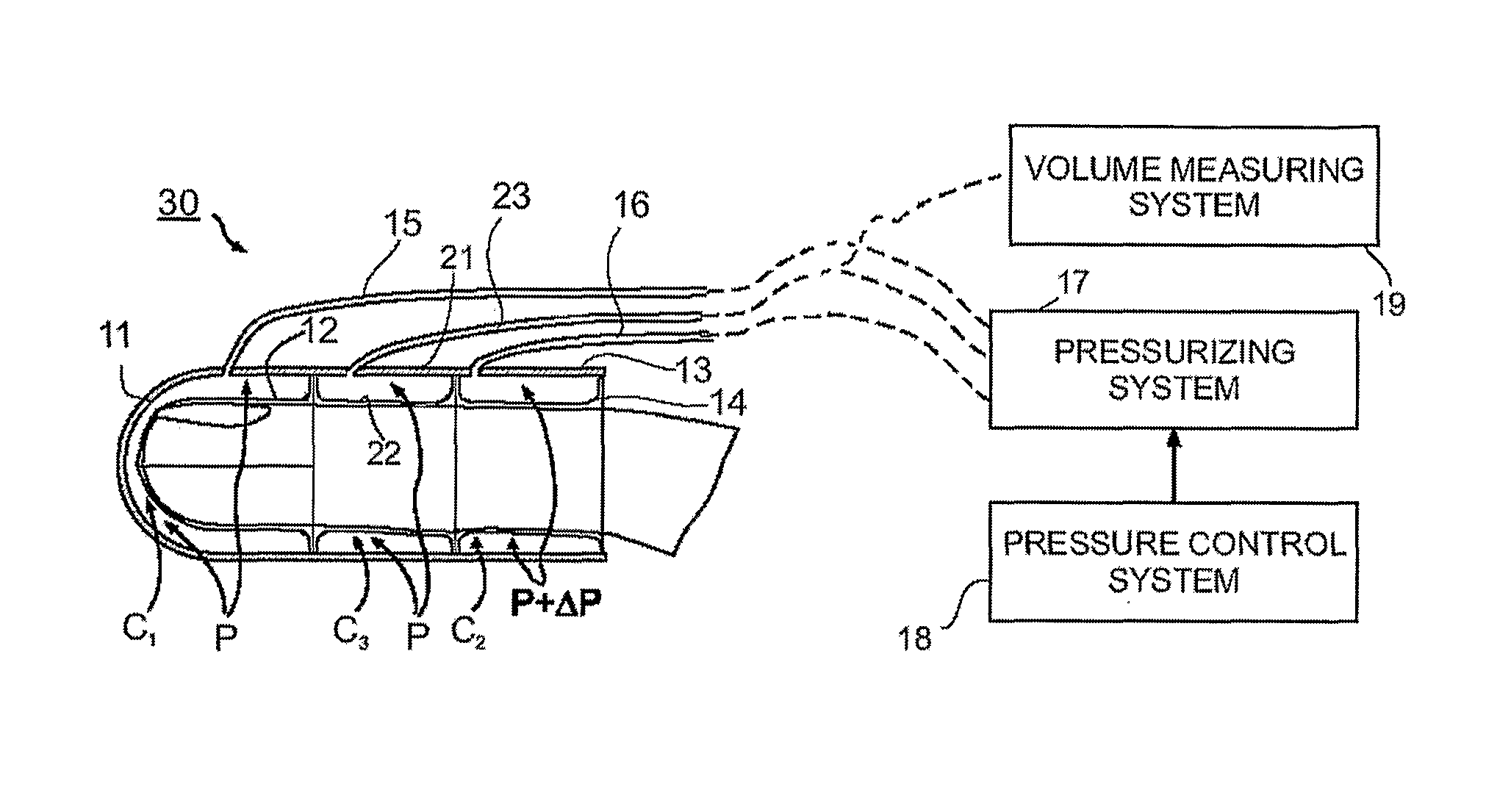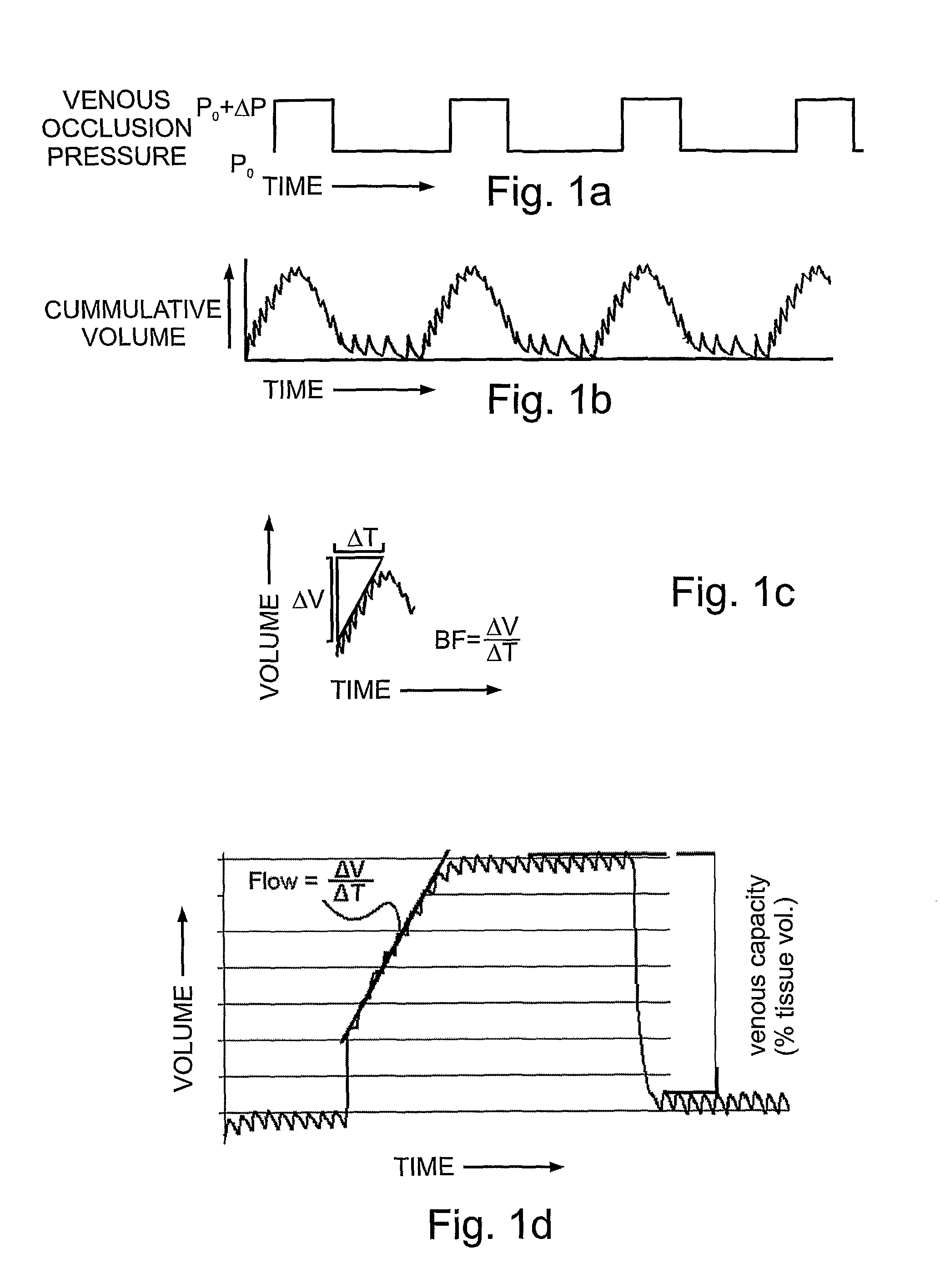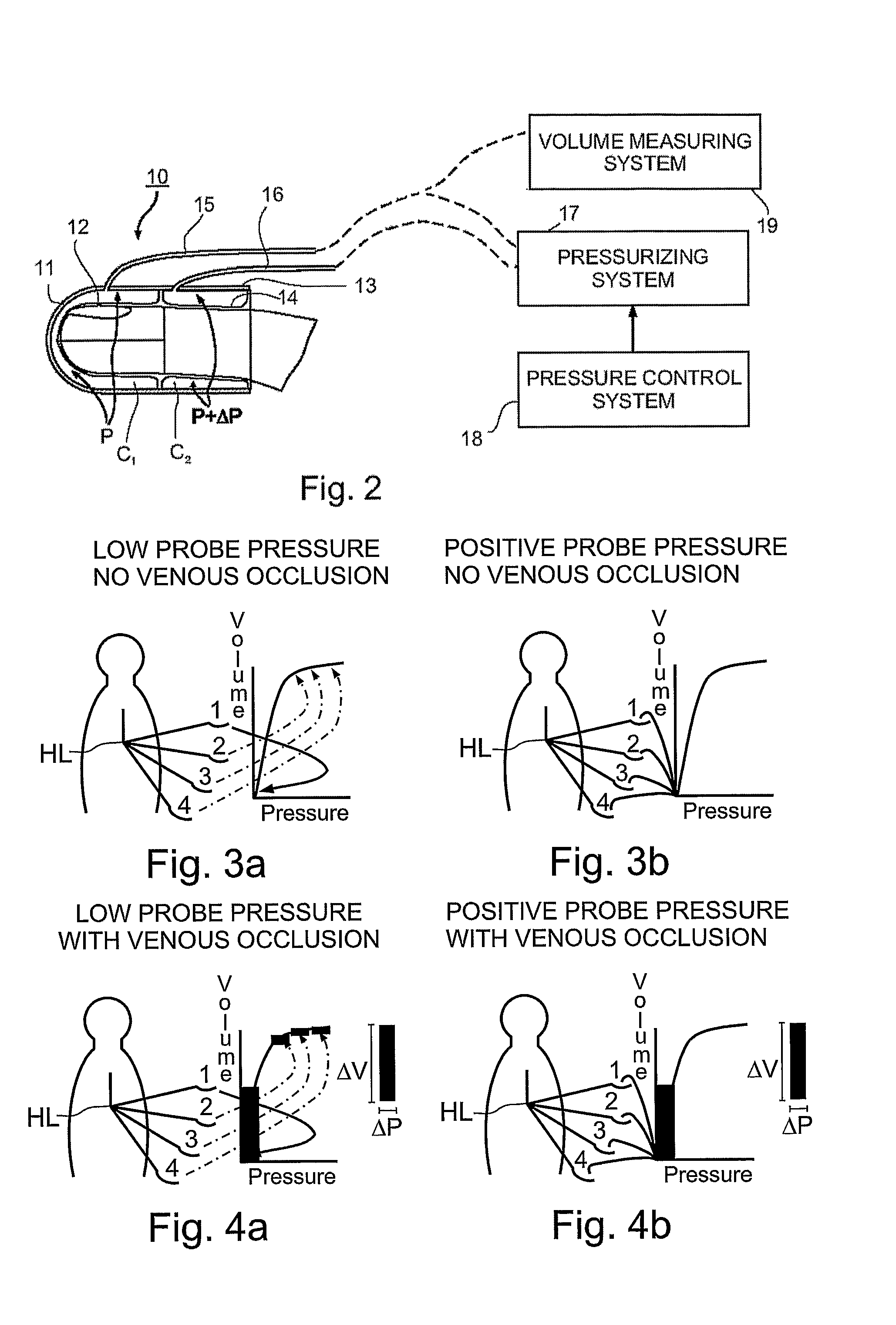Measuring Blood Flow and Venous Capacitance
a technology of venous capacitance and blood flow, which is applied in the field of measuring blood flow and venous capacitance, can solve the problems of non-linear pressure versus volume relationship, low pressure level, and inability to increase the pressure of the contained blood
- Summary
- Abstract
- Description
- Claims
- Application Information
AI Technical Summary
Benefits of technology
Problems solved by technology
Method used
Image
Examples
Embodiment Construction
[0041]FIG. 2 illustrates one form of apparatus which may be used for non-invasively measuring a physiological parameter of a subject in accordance with the present invention. The apparatus illustrated in FIG. 2 includes a peripheral arterial tonometry (PAT) probe constructed as described in the above-cited patents to be applied to a selected body region, a pressurizing system controlled to pressurize different sections of the probe in accordance with the present invention, and a measuring system for measuring volume changes in the body region as a result of the controlled pressurization changes applied to the body region. In the example illustrated in FIG. 2, the body region is a finger (or toe) of the subject.
[0042] Thus, the apparatus illustrated in FIG. 2 includes a PAT probe, generally designated 10, serving as the venous occlusion plethysmographic device. Probe 10 includes a housing having a first section 11 configured to enclose the distal tip of the finger and carrying, on i...
PUM
 Login to View More
Login to View More Abstract
Description
Claims
Application Information
 Login to View More
Login to View More - R&D
- Intellectual Property
- Life Sciences
- Materials
- Tech Scout
- Unparalleled Data Quality
- Higher Quality Content
- 60% Fewer Hallucinations
Browse by: Latest US Patents, China's latest patents, Technical Efficacy Thesaurus, Application Domain, Technology Topic, Popular Technical Reports.
© 2025 PatSnap. All rights reserved.Legal|Privacy policy|Modern Slavery Act Transparency Statement|Sitemap|About US| Contact US: help@patsnap.com



